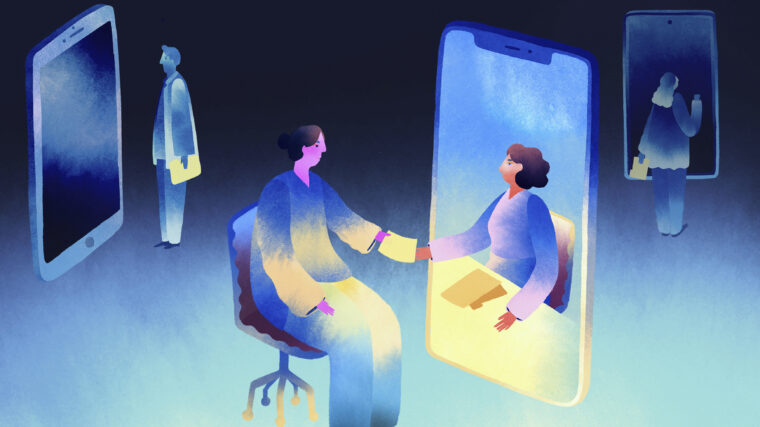What if the best student support service universities could offer haven’t been designed yet – all because the right students weren’t in the room?
It’s an unsettling thought, especially for those of us who have worked within the sector with hopes of improving student wellbeing, success, and engagement.
But it’s a question I kept circling back to during my own Master’s dissertation – on how higher education leaders can empower student success through student support services.
Despite evidence of dedicated and passionate staff, adequate funding, and strategic frameworks, students still reported gaps – not just in service delivery, but in how those services are conceived.
The issue isn’t just operational, it’s philosophical.
Going from “we provide” to “we build together”
Higher education has made important strides in expanding student services – from wellbeing hubs and learning support, to financial aid and disability access. But often, these services are still created for students, rather than with them.
Student feedback is collected after implementation, student leaders are invited to steering groups halfway through, and students are asked for “input” on final drafts rather than on the first blank page.
But that’s not co-creation – it’s consultation with extra steps.
When we move beyond ticking the “student voice” box and start sharing power, from the ideation stage to ongoing evaluation, something transformative happens – services become relevant, not just available.
Across the Irish and UK sectors, we talk a good game about partnership. But authentic representation often struggles against institutional muscle memory – senior committees with unclear roles for student reps, siloed support departments, and legacy systems where “that’s just how it’s always been done.”
And yet, higher education institutions that embed structured co-creation into their DNA show what’s possible.
At the University of Helsinki, students sit on nearly every working group — not just tokenistically, but as equal contributors in shaping the academic experience. In the Netherlands, the concept of the “student assessor” has placed students at the heart of university governance.
In Australia, institutions have embedded co-design into their equity and access strategies, involving students from underrepresented backgrounds in shaping services intended for them. Closer to home, UCL’s Student ChangeMakers programme enables students to co-lead improvements in pedagogy, assessment, and support services.
Even in smaller institutions, we see creative approaches – from peer-led mental health initiatives in Scotland to course review panels in Irish colleges where students shape curriculum content and feedback systems in real-time.
These aren’t add-ons – they’re rewiring the system to trust students as partners, not recipients. And it works.
Co-design works
When students co-design support services, they’re more likely to use them, to trust them, and to champion them among peers.
One of the strongest themes that emerged from my own research was just how often students didn’t engage with services because they weren’t designed with their realities in mind.
I’ve found mature students balancing work and care responsibilities, students with disabilities navigating inaccessible booking systems, international students who couldn’t find help that reflected their unique needs, and online learners who found support hyper-focused towards traditional campus-based students.
We don’t need another awareness campaign – we need services designed with lived experience at the core. Co-creation isn’t just about collaboration, it’s about expertise – the kind students bring simply by surviving and succeeding in today’s higher education and societal landscape.
It’s not a radical thought to think a first-year commuter student might have better insights into timetabling conflicts than a senior manager does.
If we want student support services to meet the moment, leaders have to ask the hardest question of all – what decisions am I willing to share?
Because real co-creation means giving away control. Not all of it, not recklessly – but deliberately and structurally. It means students co-chairing steering groups. It means budgets ringfenced for student-led initiatives. It means evaluation that includes student-led metrics of success, not just institutional KPIs.
And it means recognising that students are not a problem to be solved, but a resource to be repurposed.
As we continue to navigate one of the worst cost-of-living crises we’ve ever seen, post-pandemic recovery, and mounting mental health concerns, the temptation is to invest in more services, faster solutions, and slicker technology. But what if the most impactful thing we can do is pause – and ask students to build it with us?
Co-creation isn’t a buzzword. It’s a strategy for relevance, equity, and resilience.
And if we’re serious about empowering student success, it’s time we stopped building services around students – and started building them with students.
How might it work – and what could it change?
Reimagining support means starting with different questions: What if students didn’t have to search for help — what if help found them? What if every staff member saw themselves as part of the support system, not just those with “student services” in their title? What if wellbeing wasn’t its own office, but a value that lived in curriculum design, assessment timelines, and space planning?
There’s no one model, and that’s the point. At some universities, it might mean tearing down departmental silos and creating shared case management teams. In others, it could mean radically overhauling communication with students — ditching ten disconnected emails for one meaningful touchpoint, co-designed with students for students.
It could mean integrating student advisory roles across academic faculties/schools, or giving SUs shared governance over support strategy, not just representation on working groups.
It could even be as bold as adopting a ‘universal design’ approach to all student services — where we build systems for the most marginalised, and in doing so, make them better for everyone.
The change isn’t just structural — it’s cultural, philosophical. When students see that their experience and input drives institutional decisions, not just fills out end-of-semester surveys, something shifts. Trust deepens. Engagement rises. The story students tell about their university begins to change — from “I had to figure it all out” to “they built this with us in mind.”












